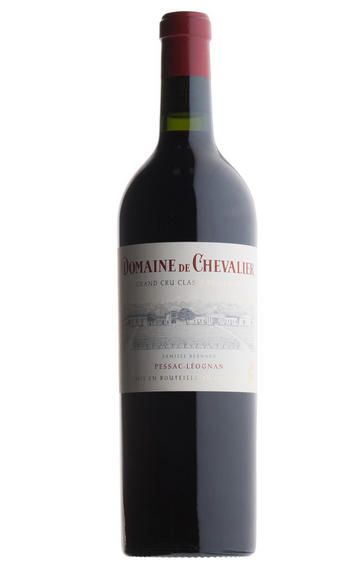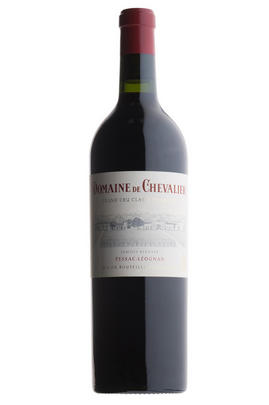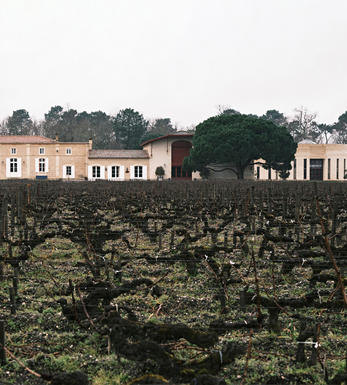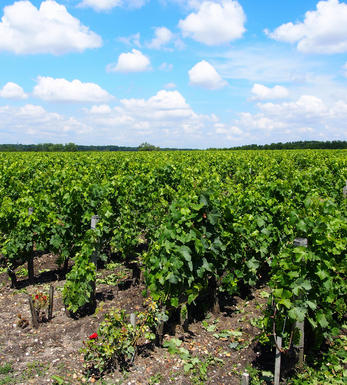
2017 Domaine de Chevalier, Pessac-Léognan, Bordeaux

Critics reviews
Lisa Perrotti-Brown - 27/04/2018
James Suckling - jamessuckling.com - April 2018
(92-94)/100 Neal Martin, Vinous
About this WINE

Domaine de Chevalier
Domaine de Chevalier is one of the few Graves estates to produce both first class reds and whites. The property was purchased by the Ricard family in 1865 and remained in their hands until it was bought by the Bernard distilling company in 1983. Domaine De Chevalier has 35 hectares of vines and red wine accounts for 80% of the production. Made from a blend of 55% Cabernet Sauvignon, 40% Merlot, and 5% Cabernet Franc, the wine is fermented in temperature-controlled, stainless steel vats and then matured in oak barriques (50% new) for 18 months.
Domaine de Chevalier is fortunate to have such a fine team to run its affairs. Olivier, whose family business owns the estate, is the outgoing but canny administrator whilst Rémi Edange is hands-on, knowing every vine and every barrel. Whilst their white wines have always been amongst the very finest, the reds were simpler affairs. But from the 1995 vintage onwards greater flair and concentration was in evidence. The quality curve is now further accentuated by the team's bold move to appoint Stéphane Derenoncourt, of La Mondotte fame, as consultant winemaker. Domaine De Chevalier is classified as a Graves Cru Classé.

Pessac-Leognan
In 1986 a new communal district was created within Graves, in Bordeaux, based on the districts of Pessac and Léognan, the first of which lies within the suburbs of the city. Essentially this came about through pressure from Pessac-Léognan vignerons, who wished to disassociate themselves from growers with predominately sandy soils further south in Graves.
Pessac-Léognan has the best soils of the region, very similar to those of the Médoc, although the depth of gravel is more variable, and contains all the classed growths of the region. Some of its great names, including Ch. Haut-Brion, even sit serenely and resolutely in Bordeaux's southern urban sprawl.
The climate is milder than to the north of the city and the harvest can occur up to two weeks earlier. This gives the best wines a heady, rich and almost savoury character, laced with notes of tobacco, spice and leather. Further south, the soil is sandier with more clay, and the wines are lighter, fruity and suitable for earlier drinking.
Recommended Châteaux: Ch. Haut-Brion, Ch. la Mission Haut-Brion, Ch. Pape Clément, Ch Haut-Bailly, Domaine de Chevalier, Ch. Larrivet-Haut-Brion, Ch. Carmes Haut-Brion, Ch. La Garde, Villa Bel-Air.

Cabernet Sauvignon Blend
Cabernet Sauvignon lends itself particularly well in blends with Merlot. This is actually the archetypal Bordeaux blend, though in different proportions in the sub-regions and sometimes topped up with Cabernet Franc, Malbec, and Petit Verdot.
In the Médoc and Graves the percentage of Cabernet Sauvignon in the blend can range from 95% (Mouton-Rothschild) to as low as 40%. It is particularly suited to the dry, warm, free- draining, gravel-rich soils and is responsible for the redolent cassis characteristics as well as the depth of colour, tannic structure and pronounced acidity of Médoc wines. However 100% Cabernet Sauvignon wines can be slightly hollow-tasting in the middle palate and Merlot with its generous, fleshy fruit flavours acts as a perfect foil by filling in this cavity.
In St-Emilion and Pomerol, the blends are Merlot dominated as Cabernet Sauvignon can struggle to ripen there - when it is included, it adds structure and body to the wine. Sassicaia is the most famous Bordeaux blend in Italy and has spawned many imitations, whereby the blend is now firmly established in the New World and particularly in California and Australia.


Buying options
Add to wishlist
Description
This has really attractive aromas of red berry, raspberry and a hint of cassis. A blend of 70 percent Cabernet Sauvignon, 25 percent Merlot and five percent Petit Verdot, the mid-palate is fleshed out with a lovely seam of redcurrant and blackcurrant, with a lifted finish. Great acidity, crunchy fruit and good flesh, this will age nicely. A very nice well-balanced Domaine de Chevalier.
wine at a glance
Delivery and quality guarantee